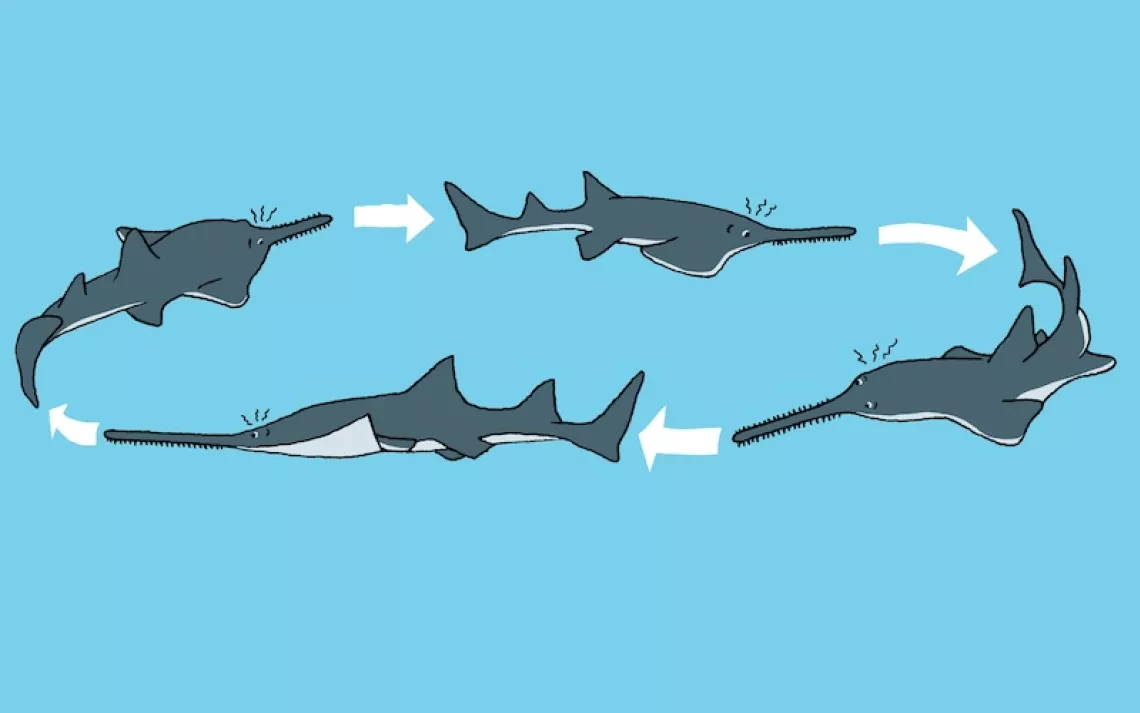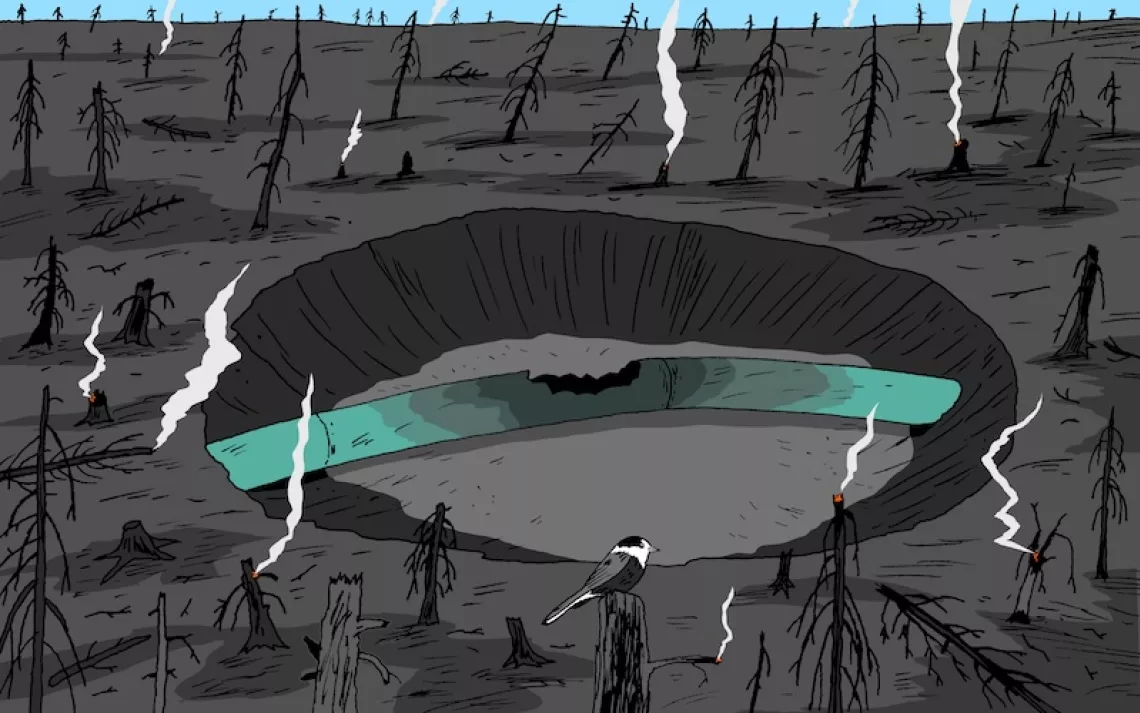How to Stay Safe in the Summertime Heat
Climate change is leading to hotter temperatures. Here’s how to protect yourself.
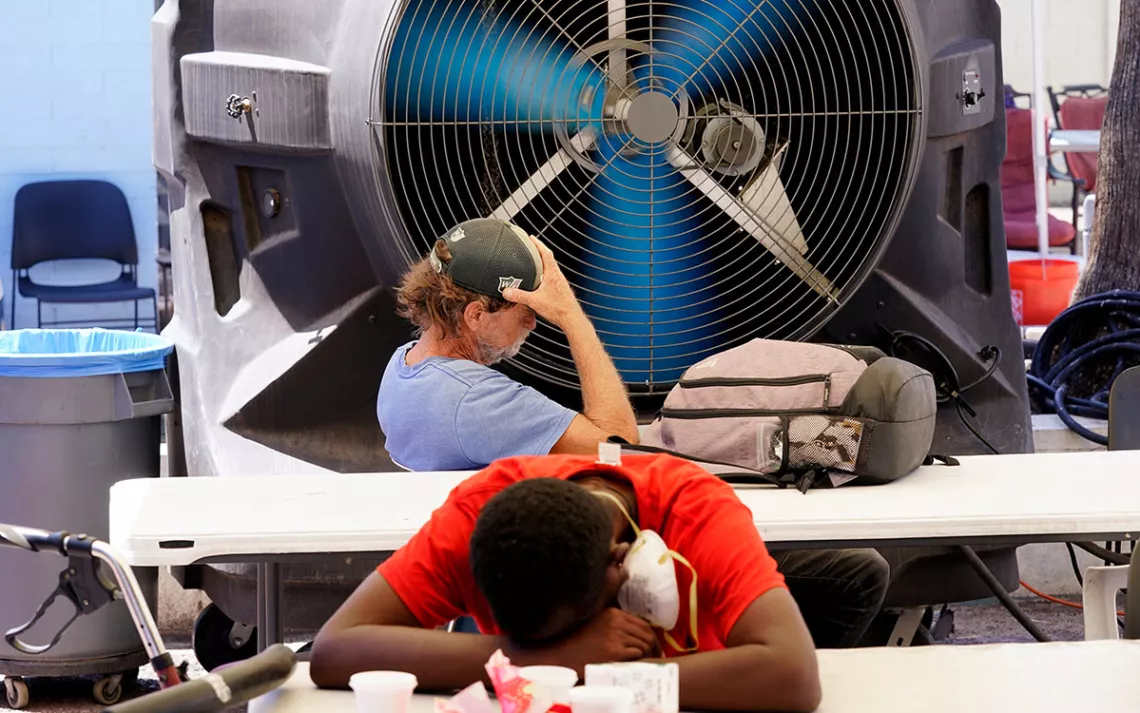
People try to keep cool at the Justa Center, a resource center catering to the older homeless population, as temperatures hit 110°F on July 19, 2022, in Phoenix, Arizona. The Biden administration on July 26, 2022, unveiled a new website, heat.gov, that federal officials hope can help people and local governments beat the heat and keep it from getting deadly. | Photo by Ross D. Franklin, AP File
The pleasures of summer are countless. For billions of people around this warming planet, however, summers are also becoming increasingly dangerous, largely because of human-driven climate change from burning coal, oil, and gas. This summer season is already shaping up to be one of the hottest on record. In June, the planet’s average temperature briefly broke through a key global warming threshold, and a brutal heatwave settled over much of the United States over the Juneteenth weekend.
Here are some tips to safely enjoy this season, as well as warning signs of heat illnesses and how to respond to them.
• Avoid getting too hot in the first place. If you can, stay out of the sun during the hottest part of the day. Definitely avoid exercising when it’s hot. Even inside, wear as little clothing as possible. You’ll often see warnings to avoid outdoor activity between 10 a.m. and 2 p.m., which is when UV rays are most intense. Actually, the hottest part of the day is most frequently in the late afternoon, roughly between 3 p.m. and 6 p.m., and that’s when you should avoid being outside in the heat.
• Dress for the heat. If you do go out in the heat, wear clothes that are breathable, loose, and light-colored. You’ll want a hat to protect your head, preferably a wide-brimmed one that provides lots of shade. Remember to take frequent breaks from the heat and use sunscreen. Sunburn not only causes skin cancer but also interferes with your natural cooling system: sweating.
• Drink up! Staying hydrated is the key to avoiding heat illness. Drink plenty of plain water throughout the day when it’s hot.
• But avoid alcohol. Alcohol is a triple threat in the heat. It makes you sweat more and increases urination—both of which put you at risk for dehydration even at lower temperatures. At higher quantities, alcohol also impairs judgment, and you may not recognize that you’re getting dehydrated.
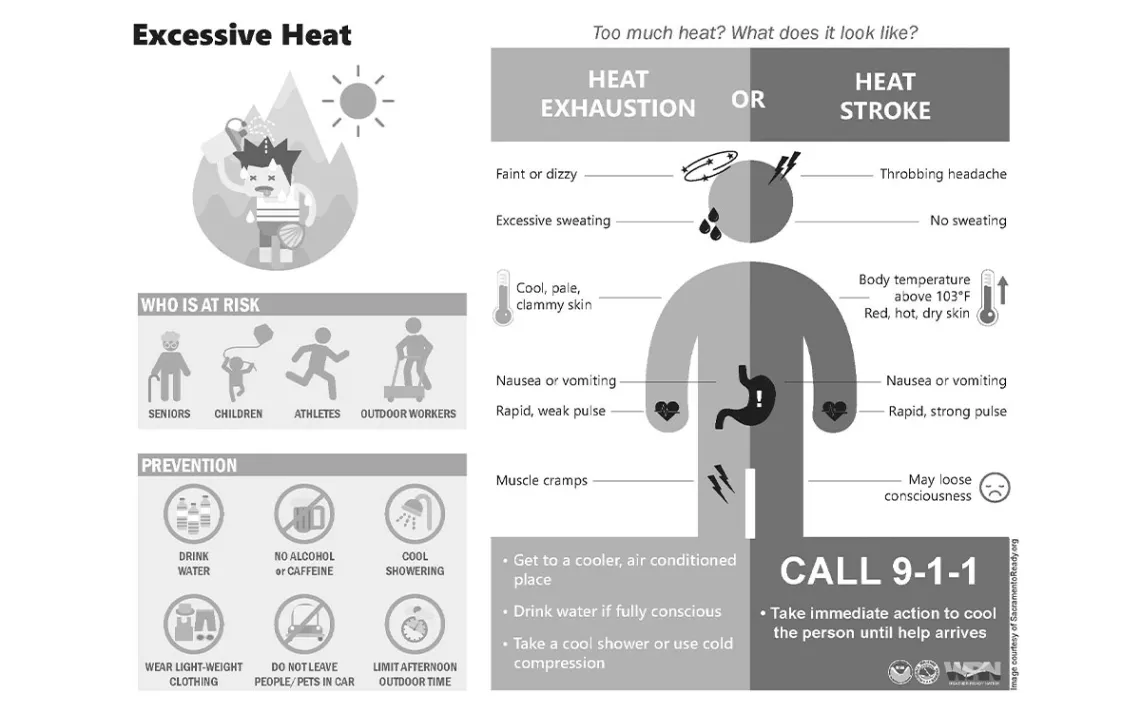
Heat index chart courtesy of the National Oceanic and Atmospheric Administration
• Age is a factor. Given the right (or wrong) conditions, anyone can get overheated. But age plays a role when it comes to vulnerability to heat stress. Children under five are especially prone to overheating, which is why they should never be left unattended in a hot car. On the other end of the spectrum, our bodies typically have more trouble staying cool in the heat at age of 65 and older.
That’s partly why staying fit as we age is so important, according to Kristie Ebi, an epidemiologist at the University of Washington who studies the effects of global warming on human health. “Fitness is highly correlated with age,” Ebi said, “and the more fit you are, regardless of age, the better able you are to handle heat stress.”
• So are medical conditions. One reason heat is dangerous to older people is they are more likely to be on medications that make them prone to heat illness. But anyone taking certain medicines will have the same problems. Consult your doctor about medicine interactions with heat. There’s mounting evidence that pregnant women exposed to high temperatures in their third trimester are at higher risk of having a low-birth-weight baby, which can have serious health consequences for the infant. Other conditions that make it harder to stay cool include obesity, poor circulation, and mental illness.
• Use the Heat Index. You know the old saying, “It’s not the heat, it’s the humidity”? As usual, binary thinking is the worst thinking. It’s the heat and the humidity, of course. That’s why the Heat Index was created; it combines both humidity and temperature to address how our ability to cool off is affected by a combination of the two.
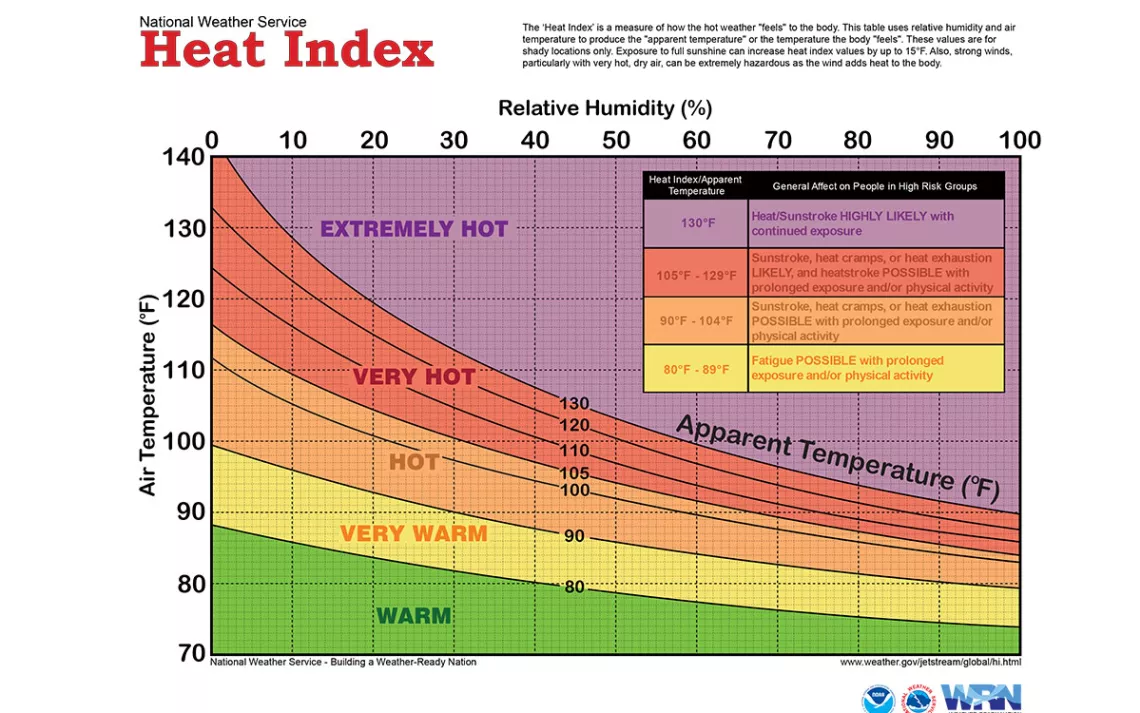
Heat index chart courtesy of NOAA
• Think local. Don’t rely on weather reports (and apps) that give temperatures for a large area like a city. Temperatures are hyperlocal and can vary widely (by 12°F or more) across in neighboring zip codes. This is often a deadly relic of historical and ongoing racism, with predominantly white neighborhoods having more cooling features like shade trees and lawns and Black and brown neighborhoods lacking greenery and having more open pavement, including freeways and industrial areas, which also raise temperatures around them.
• Cool off at night. It’s vital to cool off completely at night, especially during heat waves. That’s because the negative effects of heat are cumulative. If you don’t fully recover at night from daytime overheating, your tolerance to heat the next day is severely reduced.
• Take it slowly. When traveling to a hotter location, your body needs to acclimate to the new conditions. Don’t spend too much time out in the sun for the first day, and then gradually increase the amount of time you spend outside. Again, drink plenty of plain water and pay attention to how you’re feeling.
How to spot, and respond to, the progression of heat illnesses
Despite trying to do all the right things, you may fall prey to heat illness. It’s important to recognize the symptoms so that you can act before causing long-term damage to your body. Note: During extreme heat events, your body may overheat so rapidly that you don’t notice the milder symptoms until it’s too late.
• Heat rash: This is the mildest form of heat illness. Sometimes called prickly heat, heat rash is caused by excessive sweating and clogged pores. The irritated skin develops what looks like red pimples.
Treatment: Cool the skin using a wet cloth or take a cool shower or bath. Stay out of the heat until the rash goes away.
• Heat cramps: These painful muscle spasms occur most frequently at night and indicate that sweating has caused you to lose body salts and minerals.
Treatment: Drink clear juice or a sports drink with electrolytes. Rest for several hours after the cramps resolve before beginning any strenuous activity.
• Heat exhaustion: This is a more serious sign of dehydration and loss of body salts. Symptoms vary but include extreme weakness, headache, nausea, vomiting, and, sometimes, fainting.
Treatment: Begin by following the same treatments for cramps and rash: hydrating, resting, and cooling the skin—especially a cooling shower or bath. If you don’t feel better within an hour of the onset of symptoms, get medical attention immediately.
• Heatstroke: The most serious form of heat illness, heatstroke is usually fatal if not treated immediately. There are no home treatments. Possible symptoms include the absence of sweating, mental confusion or delirium, hot and dry skin, a rapid and weak pulse, intense headache, uncontrollable muscle twitching, unconsciousness, and coma.
Treatment: Seek medical attention, including by calling 911. Until medical help arrives, try to reduce body temperature.
 The Magazine of The Sierra Club
The Magazine of The Sierra Club


